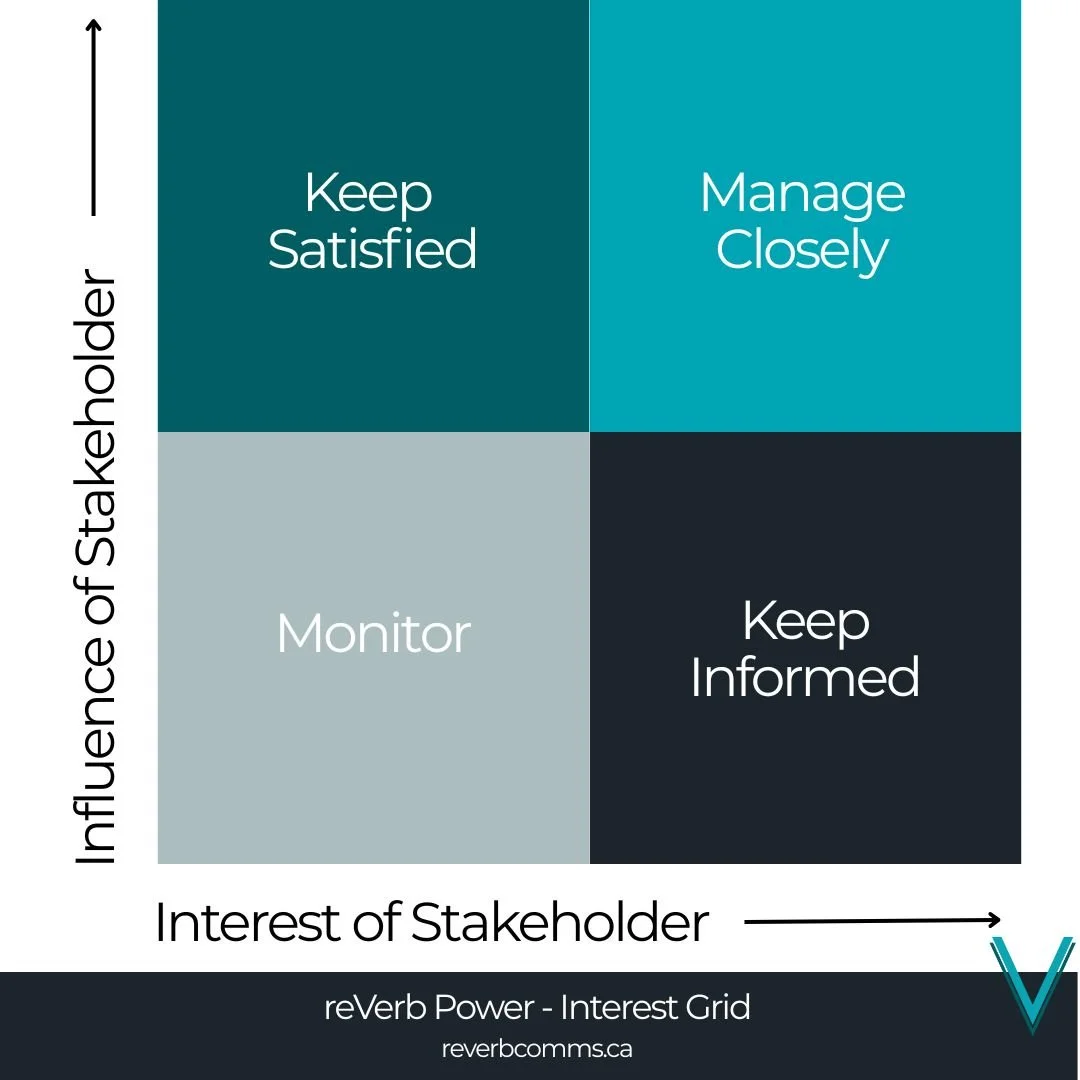What Are the 4 Major Components of a Stakeholder Management Plan?
Every project, no matter how big or small, affects people. These people are called stakeholders. They can be directly involved, like your team members, or indirectly affected, like the community or government.
To make a project successful, you must keep your stakeholders informed, involved, and supportive. That’s where a stakeholder management plan comes in. It’s a tool that helps you:
Understand who your stakeholders are
Learn what they care about
Communicate with them properly
Build strong, trusting relationships
There are four main parts of a stakeholder management plan. These are:
Stakeholder Identification
Stakeholder Analysis
Engagement Strategy
Let’s explore each part in detail and show how the 4R stakeholder analysis helps you better understand your stakeholders.
1. Stakeholder Identification
The first step is to figure out who your stakeholders are. A stakeholder is anyone who can affect or be affected by your project. This can include:
Project sponsors
Government officials
Team members
Contractors
Customers
Neighbours near a construction site
Indigenous communities
Environmental groups
Media
You need to look closely and list every person or group who might be interested in what you’re doing. Missing a key stakeholder early on can cause big problems later.
Example:
If you’re building a new recreation centre in a neighbourhood, stakeholders might include local residents, city council members, the school board, construction workers, nearby businesses and environmental regulators.
Why Stakeholder Identification Matters
If you don’t know who your stakeholders are, you can’t manage your project risks properly. Someone might raise concerns late in the process, or block your project altogether. Use this step to ask:
Who will use the project?
Who might oppose it?
Who has decision-making power?
Who must be consulted or kept informed?
You can also start grouping your stakeholders based on their role and impact level.
2. Stakeholder Analysis
Once you’ve identified your stakeholders, you need to understand them better. This step determines what motivates each stakeholder, what they expect, and how they might react to your project.
A useful tool here is the 4R Stakeholder Analysis. This model helps you clearly consider what each stakeholder brings to the project and what they expect in return.
The 4Rs of Stakeholder Analysis:
Rights
What legal, moral, or contractual rights does this stakeholder have?
Do they have a say in approvals or reviews? Are they entitled to information or compensation?
Example: A city department may have the legal right to review environmental plans. A local business might have the right to access roads near your project.
Responsibilities
What duties does the stakeholder have toward the project?
Are they responsible for approvals, safety, operations, or consultation?
Example: Contractors have a duty to follow safety rules. Community members may have a responsibility to provide feedback during public engagement.
Returns (or Rewards)
What benefits does the stakeholder receive from the project?
This could be profit, improved services, job opportunities, or public recognition.
Example: A company funding the project may earn revenue. Residents may gain a new school or cleaner water.
Relationships
What is the nature of your connection with this stakeholder?
Are they cooperative or difficult? Do they support each other, or is there conflict?
Example: City planners and developers may work closely. A residents' group may have tensions with a construction firm.
How to Use the 4Rs
Make a chart or worksheet for each stakeholder.
| Stakeholder | Rights |
|
Returns | Relationships |
|---|---|---|---|---|
| City Council |
Legal Approval |
Review
Project Plans |
Public
Support |
Works with
Mayor's Office |
| Local Business |
Road Access |
Feedback on
Impact |
More
Customers |
Friendly
with Community Leaders |
This analysis helps you predict how each stakeholder will respond and how best to approach them.
Power vs. Interest Mapping
Four types of stakeholders:
High Power, High Interest → Keep closely engaged
High Power, Low Interest → Keep satisfied
Low Power, High Interest → Keep informed
Low Power, Low Interest → Monitor only
In addition to the 4Rs, many teams use a power-interest grid. This shows:
Who has the most power
Who cares the most about the project
You can then decide who needs close attention and who can just get occasional updates.
3. Communication Plan
Now that you know who your stakeholders are and what they care about, the next step is to plan your communication.
Every stakeholder needs the right amount of information at the right time. Some want frequent updates. Others just need to know when big decisions are made.
Key Questions to Ask
What information does this stakeholder need?
How often should we communicate?
What is the best way to reach them?
Who will be responsible for sharing updates?
Different Methods of Communication
Each stakeholder is different. Some prefer in-person meetings. Others want emails, newsletters, or formal reports.
Common communication tools include:
Email updates
Public meetings
Phone calls
Newsletters
Reports and briefings
Social media posts
Project websites
Posters or signs near project areas
Example: A government agency may want regular written reports and data updates, while local residents may prefer open houses or town hall meetings.
Keep It Clear and Accessible
Make sure your messages are:
Easy to understand
Free of jargon
Honest about risks and timelines
Translated if needed
Shared on time
Being clear and consistent builds trust. It also prevents rumours or misunderstandings.
4. Engagement Strategy
The last part of a stakeholder management plan is about action. How will you engage each stakeholder throughout the project?
This is different from just sending updates. Engagement means involving people, building trust, and sometimes adjusting the project based on their feedback.
Ways to Engage Stakeholders
Invite feedback at different stages
Hold workshops or Q&A sessions
Create advisory groups
Offer site tours or hands-on demos
Include stakeholders in decision-making when appropriate
Recognize and respond to concerns quickly
Match Your Strategy to the Stakeholder
Not every stakeholder needs the same level of engagement.
For high-power stakeholders: involve them early and often
For supportive stakeholders: keep them updated and make them feel valued
For at-risk or opposing stakeholders: address concerns and look for compromise
Examples of Engagement Tactics
| Stakeholder Type |
Engagement
Example |
|---|---|
| Residents Near a Site |
Host Monthly Info Sessions and
Collect Feedback |
| Indigenous
Communities |
Hold
Meaningful Consultations and Follow Protocols |
| Elected
Officials |
Provide
Talking Points and Regular Updates |
| Youth or Students |
Invite them to Help with Artwork
or Ideas |
Bringing It All Together
A strong stakeholder management plan combines all four components:
Identify
List every person or group who is affected by or can affect the project.
Analyze
Use the 4R model to understand each stakeholder’s rights, responsibilities, returns, and relationships.
Communicate
Create a clear plan to send the right messages at the right time, using the right methods.
Engage
Actively build relationships with your stakeholders. Involve them in ways that build support and solve problems early.
Why It Matters
Ignoring stakeholders—or not managing them well—can cause serious problems:
Project delays
Budget overruns
Legal challenges
Protests or opposition
Loss of trust and reputation
On the other hand, a strong plan can:
Help your project run smoothly
Increase public support
Reduce risks
Improve decision-making
Create lasting partnerships
Final Thoughts
Stakeholder management is about working with people and building trust. Every stakeholder has different needs, goals, and concerns.
Using the four major components: identification, analysis, communication and engagement, gives your project a better chance of success. By applying the 4R stakeholder analysis: Rights, Responsibilities, Returns, and Relationships, you go deeper. You learn not just who your stakeholders are but also what matters to them.
That’s the kind of planning that makes great projects possible.














